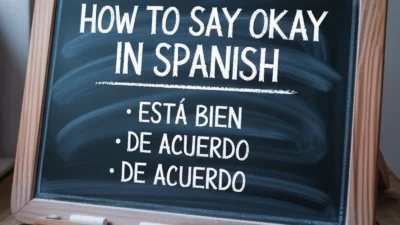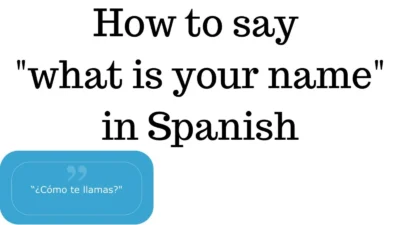If you’re learning Korean, it’s essential to know how to say bye in Korean to end conversations naturally and respectfully. Just like in English, there are different ways to say goodbye depending on the situation—formal, casual, or even playful.
The most common phrases include “안녕” (annyeong) for informal goodbyes and “안녕히 계세요” (annyeonghi gyeseyo) or “안녕히 가세요” (annyeonghi gaseyo) for polite situations.
Understanding how to say bye in Korean helps you sound more fluent, show proper respect, and communicate more effectively in real-life conversations.
Using the right goodbye for the right setting shows cultural understanding and manners. With just a few phrases, you can leave a positive impression in any Korean conversation.
1. 안녕 (Annyeong) – “Bye” (Informal)
Origin:
Derived from the word meaning “peace,” 안녕 is the go-to casual goodbye among friends.
Example:
👤 User A: 안녕! 내일 봐! (Bye! See you tomorrow!)
👤 User B: 응, 안녕~ (Yep, bye~)
Use: Very casual; used with close friends or people younger than you.
2. 안녕히 가세요 (Annyeonghi gaseyo) – “Go in peace”

Origin:
This is the formal way to say goodbye when the other person is leaving. It literally means “Go peacefully.”
Example:
👤 User A: 안녕히 가세요! 좋은 하루 되세요. (Goodbye! Have a nice day.)
👤 User B: 감사합니다. 또 뵐게요. (Thank you. See you again.)
Use: Formal; used when someone else is leaving, and you’re staying.
3. 안녕히 계세요 (Annyeonghi gyeseyo) – “Stay in peace”
Origin:
The counterpart to “Annyeonghi gaseyo,” this is used when you are leaving and the other person is staying.
Example:
👤 User A: 저 먼저 가볼게요. 안녕히 계세요! (I’ll go ahead. Goodbye!)
👤 User B: 조심히 가세요~ (Take care!)
Use: Formal; used when you’re the one leaving.
4. 잘 가 (Jal ga) – “Go well”
Origin:
Casual version of “go safely.” “잘” means “well,” and “가” is the root for “go.”
Example:
👤 User A: 나 간다~ 잘 가! (I’m heading out~ Bye!)
👤 User B: 그래, 조심히 가~ (Okay, go safely!)
Use: Informal; when someone else is leaving.
5. 잘 있어 (Jal isseo) – “Stay well”
Origin:
Used when you are leaving, and someone else is staying. Opposite of “잘 가.”
Example:
👤 User A: 나 이제 가야 돼. 잘 있어~ (I have to go now. Take care!)
👤 User B: 응~ 나중에 봐! (Okay~ See you later!)
Use: Informal; said to someone staying behind.
6. 다음에 봐 (Daeume bwa) – “See you next time”

Origin:
Common casual goodbye in Korean, especially among peers or in friendly conversations.
Example:
👤 User A: 오늘 즐거웠어! 다음에 봐~ (Had fun today! See you next time~)
👤 User B: 나도! 다음에 또 봐~ (Me too! Let’s meet again!)
Use: Casual, friendly.
7. 나중에 봐 (Najunge bwa) – “See you later”
Origin:
Literally means “See you later.” Used in everyday conversations.
Example:
👤 User A: 나 먼저 갈게~ 나중에 봐! (I’m leaving first—see you later!)
👤 User B: 그래~ 조심히 가! (Okay~ Take care!)
Use: Informal, neutral.
8. 또 봐요 (Tto bwayo) – “See you again” (polite)
Origin:
“또” means “again,” and “봐요” is the polite form of “to see.” Shows polite friendliness.
Example:
👤 User A: 오늘 수업 즐거웠어요. 또 봐요! (Class was fun. See you again!)
👤 User B: 네~ 다음 시간에 봬요! (Yes~ See you next time!)
Use: Polite, commonly used in school or business.
9. 다음에 또 봬요 (Daeume tto bwaeyo) – “See you again next time” (formal)
Origin:
“봐요” becomes “봬요” to show extra respect, often used in business or with elders.
Example:
👤 User A: 회의 감사했습니다. 다음에 또 봬요. (Thank you for the meeting. See you next time.)
👤 User B: 수고하셨습니다. (Thank you for your hard work.)
Use: Formal and respectful.
10. 수고하세요 (Sugohaseyo) – “Keep up the hard work”
Origin:
A unique Korean goodbye that shows appreciation for someone’s effort.
Example:
👤 User A: 저 갑니다. 수고하세요! (I’m off. Keep up the great work!)
👤 User B: 네~ 고생 많으셨습니다! (You too! Great job today.)
Use: Polite, used when leaving workplaces or stores.
11. 잘 자 (Jal ja) – “Sleep well / Good night”

Origin:
Used before bedtime or when parting ways late at night. “잘” = well, “자” = sleep.
Example:
👤 User A: 이제 자야지. 잘 자~ (Time to sleep. Good night~)
👤 User B: 응~ 너도 잘 자! (Yeah, you too!)
Use: Informal, close friends or family.
12. 좋은 하루 보내 (Joeun haru bonae) – “Have a nice day”
Origin:
A modern goodbye that echoes English-style politeness.
Example:
👤 User A: 나 가야 돼. 좋은 하루 보내~ (I gotta go. Have a nice day!)
👤 User B: 너도~ 잘 다녀와! (You too~ Have a good one!)
Use: Friendly and polite.
13. 내일 봐 (Naeil bwa) – “See you tomorrow”
Origin:
Direct and common; literally means “Tomorrow see.”
Example:
👤 User A: 우리 내일 시험이야. 내일 봐~ (We have the exam tomorrow. See you!)
👤 User B: 알겠어. 내일 봐~ (Got it. See you then~)
Use: Informal or semi-casual.
14. 행운을 빌어요 (Haeng-un-eul bireoyo) – “Wishing you luck”
Origin:
A heartfelt goodbye used before big events or when parting for a long time.
Example:
👤 User A: 나 면접 보러 가. (I’m going for my interview.)
👤 User B: 잘 하고 와! 행운을 빌어요~ (Do well! Good luck!)
Use: Formal and kind; used for encouragement.
15. Peace~ (피스~) – Slangy, modern
Origin:
Borrowed from English youth slang. “Peace” said playfully as a cool, trendy exit.
Example:
👤 User A: 나 간다~ 피스~✌️ (I’m out~ Peace~)
👤 User B: 피스! (Peace!)
Use: Playful, youth culture or texti
Conclusion:
Now that you’ve learned how to say bye in Korean, you can confidently end conversations in both formal and casual settings. Whether you use “안녕” with friends or “안녕히 가세요” in polite situations, each phrase helps you show the right level of respect. Saying goodbye correctly is just as important as a proper greeting in Korean culture.
Keep practicing how to say bye in Korean to sound more natural and make lasting impressions. With just a few expressions, you’ll be saying goodbye like a native speaker! 👋🇰🇷
And remember—knowing the right goodbye adds a personal, respectful touch to every interaction.



